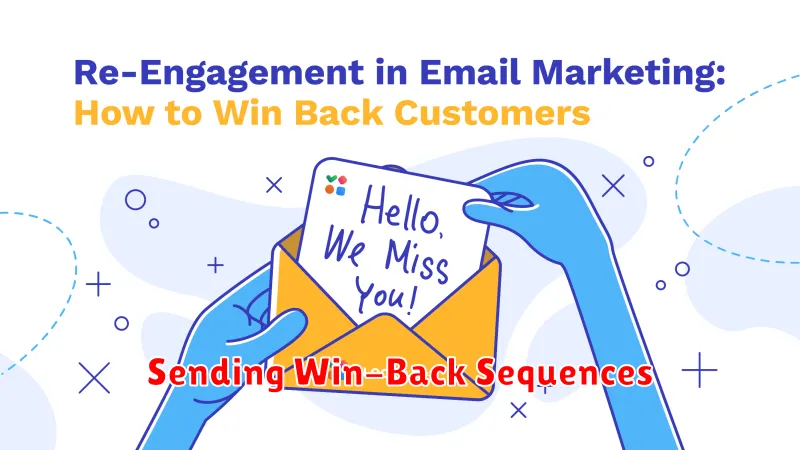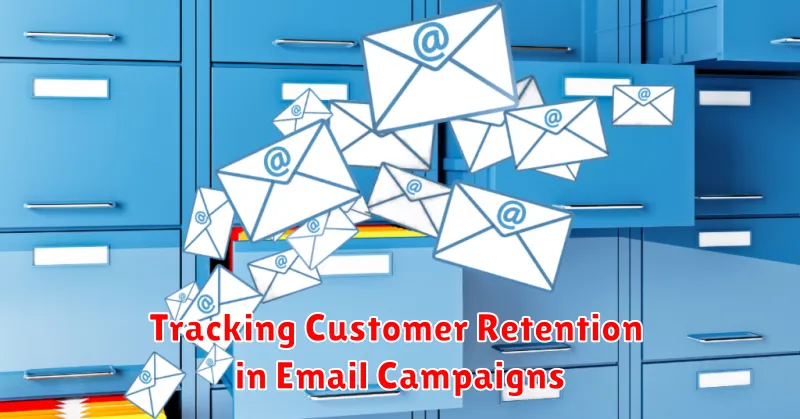Customer retention is crucial for any successful business. Understanding how to effectively track and measure customer retention in your email campaigns is paramount for maximizing your return on investment and fostering long-term customer loyalty. This article will delve into the key metrics and strategies for tracking customer retention within your email marketing efforts, providing actionable insights to improve your campaigns and build stronger customer relationships. By analyzing email campaign metrics, you can identify areas for improvement and optimize your email marketing strategy to effectively engage and retain your valuable customers.
From analyzing open rates and click-through rates to measuring customer lifetime value (CLTV) and churn rate, understanding these key performance indicators (KPIs) is essential for accurately tracking customer retention. We’ll explore the importance of each metric and how to use them to gain valuable insights into your email campaign performance. This knowledge will empower you to refine your email marketing strategy, personalize your messaging, and ultimately, boost customer retention and drive business growth.
Why Retention Matters
Retaining existing customers is paramount to the success of any business, especially in the context of email marketing. Acquiring new customers can be significantly more expensive and time-consuming than nurturing relationships with those you already have. Focusing on retention offers a higher return on investment and contributes to long-term sustainable growth.
Increased customer lifetime value (CLTV) is a key benefit of strong customer retention. Repeat customers tend to spend more over time than new customers, contributing significantly to overall revenue. They are also more likely to become brand advocates, providing valuable word-of-mouth marketing and positive reviews, which can attract new customers organically.
Improved profitability is another important factor. Serving existing customers often involves lower costs compared to attracting new ones. Marketing efforts directed at retained customers can be more targeted and efficient, resulting in better conversion rates and a higher ROI on marketing spend.
Segmenting Returning Customers
Effective email campaigns rely on understanding your audience. Segmenting returning customers allows for targeted messaging and optimized offers.
This involves dividing your customer base into smaller groups based on shared characteristics. For returning customers, key segmentation factors include purchase history, engagement levels, and website activity.
Segmentation Criteria
- Purchase Frequency: Identify frequent buyers versus occasional purchasers. Offer loyalty rewards to frequent buyers and re-engagement promotions to occasional ones.
- Average Order Value: Segment customers based on their spending habits. High-value customers may receive exclusive offers or early access to new products.
- Product Preferences: Track past purchases to understand product affinities. Send targeted emails featuring related items or complementary products.
- Email Engagement: Monitor open and click-through rates. Tailor email frequency and content based on engagement levels to avoid unsubscribes.
By strategically segmenting your returning customers, you can personalize email content and provide a more relevant experience, which ultimately leads to improved customer retention and increased revenue.
Sending Win-Back Sequences

Win-back email sequences are a powerful tool for re-engaging customers who have become inactive. These automated email series are designed to remind customers about your brand and encourage them to return. A well-structured win-back sequence can significantly improve customer retention rates.
Consider offering exclusive discounts or highlighting new products or services to incentivize a purchase. Personalization is also key. Address the customer by name and segment your win-back sequences based on past purchase behavior or preferences. This targeted approach can make the emails more relevant and effective.
A typical win-back sequence might include:
- An initial email expressing appreciation for their past business and offering a small incentive.
- A second email highlighting popular products or customer favorites.
- A final email offering a larger discount or promoting a limited-time offer.
Testing different variations of your win-back sequences is crucial. Experiment with different subject lines, email copy, and incentives to optimize for maximum effectiveness.
Monitoring Repeat Opens and Clicks
Consistent engagement with your email campaigns is a strong indicator of customer retention. Monitoring repeat opens and clicks provides valuable insights into which content resonates with your subscribers and keeps them coming back for more.
Track the number of subscribers who repeatedly open your emails. A high percentage of repeat opens suggests that your subject lines are effective and your email frequency aligns with subscriber preferences. Conversely, a decline in repeat opens could signal subscriber fatigue or dissatisfaction with your content.
Click-through rates for repeat openers offer another dimension of engagement data. Analyze which links within your emails are consistently attracting clicks from these subscribers. This reveals valuable information about their interests and can inform future content strategy. Identify trends in click behavior to further refine your email marketing efforts and personalize the customer journey.
By analyzing both repeat opens and clicks, you can identify your most loyal subscribers and tailor content specifically for them. This focused approach fosters stronger relationships and improves long-term retention.
Measuring Churn Rate
Churn rate is a critical metric for understanding the health of your email marketing efforts and overall business. It represents the percentage of subscribers who unsubscribe or become inactive during a specific period.
Calculating churn rate involves comparing the number of lost subscribers against the total number of subscribers at the beginning of the period. A simple formula is:
(Lost Subscribers / Total Subscribers at Start) * 100 = Churn Rate
For example, if you started with 10,000 subscribers and lost 500 during the month, your churn rate would be (500 / 10,000) * 100 = 5%.
Regularly monitoring your churn rate helps identify potential issues with your email campaigns. A high churn rate might indicate problems with content relevance, sending frequency, or overall subscriber engagement. Analyzing churn alongside other metrics provides a more complete understanding of customer retention.
Optimizing Email Frequency
Finding the right email frequency is crucial for maximizing customer retention. Sending too many emails can lead to unsubscribes and be perceived as spam, while sending too few can result in lost opportunities to engage with your audience and build strong relationships. The ideal frequency is a delicate balance, unique to each business and customer segment.
Testing is key to determining the optimal frequency for your audience. Start by segmenting your customer base, allowing for tailored frequency strategies. For example, loyal customers might appreciate more frequent communication compared to new subscribers.
A/B testing different email cadences is highly recommended. Create two groups within a segment and send emails at different frequencies. Monitor key metrics like open rates, click-through rates, and unsubscribe rates. Analyze the data and adjust your strategy accordingly.
Consider offering frequency preferences. Allowing customers to choose how often they hear from you empowers them and demonstrates respect for their inbox. This can significantly reduce unsubscribe rates and improve overall customer satisfaction.

